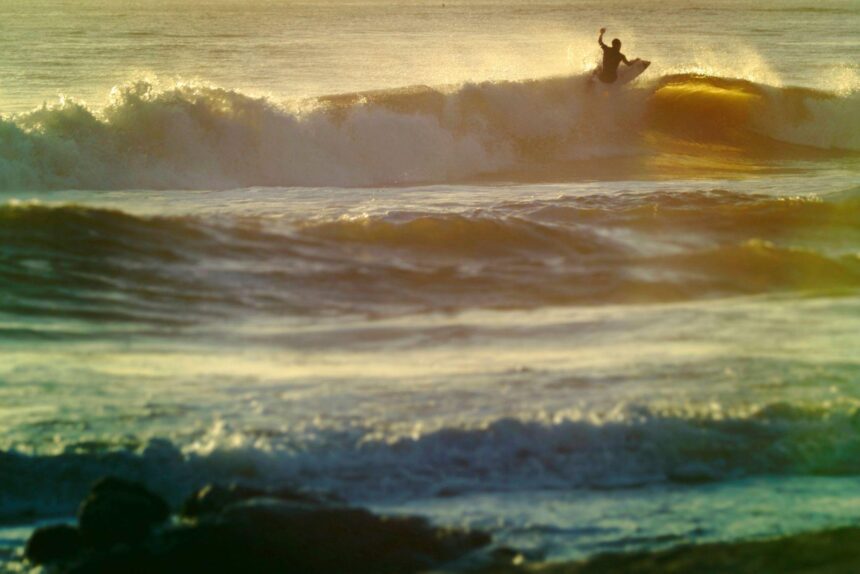Standing at the edge of the ocean with your surfboard under your arm, that crashing shorebreak might look majestic — and a little intimidating. For anyone drawn to the thrill of surfing, whether they’re a novice or looking to advance their skills, understanding how to handle beach breaks is key.
Surfing Shorebreaks, typically found on beaches where waves crash directly onto the sand with little room to maneuver, can offer powerful rides but also pack a punch if not approached properly.
Pacific Surf School, based in sunny San Diego, California, has been sharing ocean knowledge since 1997, helping over 200,000 students catch waves and stay safe on the water. From beginner to intermediate surfers, the school offers more than just surf lessons — they provide tools to navigate all types of surf conditions with confidence and awareness. One of those critical lessons? How to surf shorebreaks safely.
What Are Shorebreaks, and Why Do They Matter?
Shorebreaks — or beach breaks — occur when ocean swells hit shallow sandbars near the shore, causing waves to pitch and break quickly, often in shallow water. They’re especially common in Southern California, where shifting sandbars and varying tides can create powerful waves feet from the beach.
While these breaks may look ideal for dramatic takeoffs and short rides, they demand technique, judgment, and caution. Without the right approach, surfers risk injury or a rough wipeout in water that’s often chest-deep or shallower.
Understanding the mechanics of a beach break is step one. Shorebreaks vary during the day due to tidal shifts, changing swell directions, and wind conditions. A wave that’s clean and rideable in the morning might turn into a board-snapping wall by afternoon.
Tips From the Experts at Pacific Surf School
There’s no better way to learn the ins and outs of beach breaks than from seasoned instructors who’ve seen — and surfed — it all. At [The Best Surf School in San Diego](https://www.pacificsurf.com), safety and fun go hand-in-hand. Their coaching emphasizes smart decision-making in the water.
Here’s what their team advises when tackling powerful shorebreaks:
1. Survey the Conditions Before Paddling Out
Don’t rush into the water. Whether you’re in San Diego or travelling to a new surf spot, always take a few minutes to observe the waves. Watch the set patterns, note where the waves break consistently, and identify rip currents. Look for other surfers too — where they’re paddling out, taking off, and exiting.
Understanding the beach layout minimizes rookie mistakes and helps avoid hazardous zones.
2. Choose the Right Equipment
Not every surfboard is designed for shorebreak conditions. Soft-tops, shorter boards, and performance hybrids tend to work better in steep, fast-breaking waves. Beginners learning in shorebreaks (ideally under supervision) should always stick to soft boards and wear a well-fitted wetsuit for added protection.
At Pacific Surf School, equipment recommendations are tailored to each student’s level and the day’s surf conditions. That personalized approach ensures safer and more enjoyable sessions from day one.
3. Learn the Proper Pop-Up and Body Positioning
When surfing a shorebreak, timing is everything. A delayed pop-up or poor stance can leave you vulnerable to the wave’s impact. Instructors at Pacific Surf School focus heavily on teaching students how to pop up quickly and maintain strong body positioning to stay in control.
Body tension, balanced foot placement, and keeping a low center of gravity help riders stay on their boards longer — and reduce the risk of hard wipeouts.
4. Respect Ocean Safety and Surf Etiquette
Shorebreaks are often shared by swimmers and bodyboarders, especially at popular Southern California beaches. Following fundamental surf etiquette is critical: understand the right of way, don’t drop in on another rider’s wave, and signal intentions clearly.
Ocean safety isn’t just about etiquette; it also involves self-awareness. Don’t paddle out beyond your capability. Recognize signs of fatigue, dehydration, or stress before they compromise your ability to react in the water.
How Surf Lessons Make a Difference
Many beginner surfers make the mistake of jumping right into challenging surf without the right foundational knowledge. Shorebreaks are fast and unforgiving, making them one of the most technical environments for learning. That’s why structured surf instruction is essential — especially for new surfers starting in areas like San Diego’s Pacific Beach.
A 90-minute lesson with Pacific Surf School covers core skills like wave reading, paddling technique, duck-diving (or turtle roll for longboards), and how to handle a wave if it closes out. Perhaps more importantly, students learn about surf zones and how to avoid the impact zone — the area where waves are actively breaking.
Every Pacific Surf School lesson includes hands-on coaching on how to pass the break safely and where to position yourself to catch the best possible wave for your ability level. Group sessions provide camaraderie and shared learning, while private lessons offer tailored attention for those who are serious about advancing quickly.
Environmental Awareness at the Core
Any experienced surfer will tell you: the ocean is a living, shifting environment. Pacific Surf School instills a deep respect for the ocean and the broader coastal ecosystem in every student. Beach breaks are influenced by sand movement, storm activity, and even seasonal marine life activity.
The school encourages surfers to keep beaches clean, support local marine conservation efforts, and think like ocean stewards, not just wave riders. They believe responsible surfing starts with an appreciation of nature and understanding how human actions can positively (or negatively) impact shorelines.
The Social Side of Surfing Shorebreaks
Learning to surf — and doing it safely — isn’t just a physical journey. It’s a social and emotional one. For many Pacific Surf School students, lessons lead to lifelong friendships and a new sense of community.
Shorebreak surfing requires communication and teamwork, especially when paddling out with peers or sharing waves. Many students stick around after lessons to chat, grab food on the San Diego boardwalk, or return weekly for group sessions. Surf culture in places like Pacific Beach is welcoming and rooted in community — something Pacific Surf School deeply supports.
The school is also known for offering a safe space for all backgrounds to enter the surf world. No judgments, just encouragement and progress at your own pace. That’s a big part of what has made them a destination for travellers, families, and aspiring surfers of all ages since 1997.
Taking the Leap
Navigating beach breaks is a rite of passage in the surf world. While their power can seem daunting, with proper instruction and some time in the water, they become one of the most exhilarating types of waves to ride. The key is preparation: knowing how waves behave, having the right gear, respecting ocean rules, and having talented instructors by your side.
If you’re thinking about learning to surf — or advancing your skills — in the San Diego area, Pacific Surf School offers an experience that goes far beyond the basics. It’s not just about catching your first wave. It’s about learning to read the ocean, challenging yourself, and becoming part of a worldwide ocean-loving culture.
Ready to ride? Visit The Best Surf School in San Diego to get started. Whether it’s your first lesson or your tenth, you’ll find expert guidance, a welcoming vibe, and a better understanding of what it means to truly surf.
Because at the end of the day, surfing isn’t about conquering the ocean. It’s about learning to move with it — safely, skillfully, and always with respect.
Related News:
The Ultimate List of the Best Beach Clubs in Seminyak for 2025














